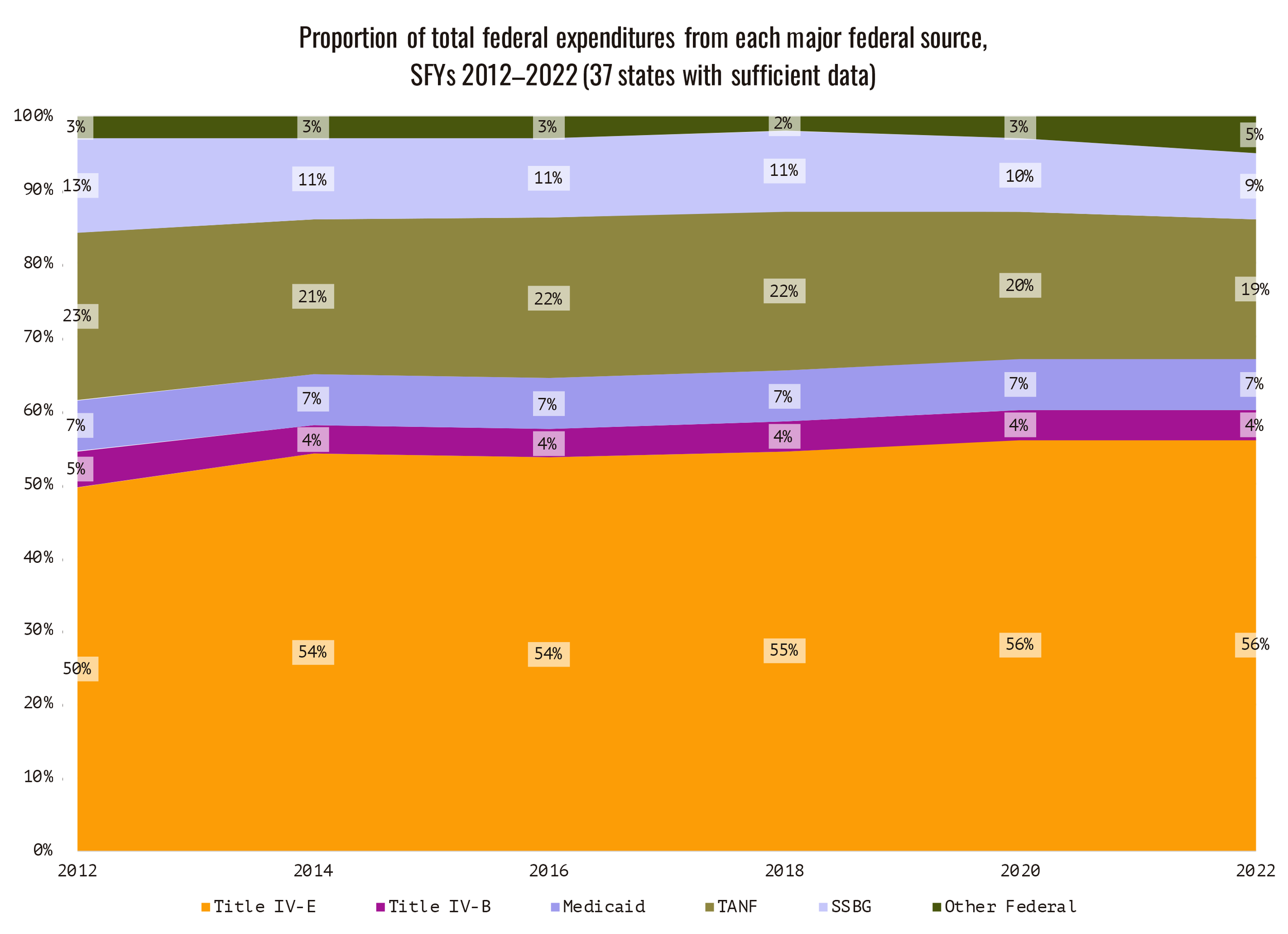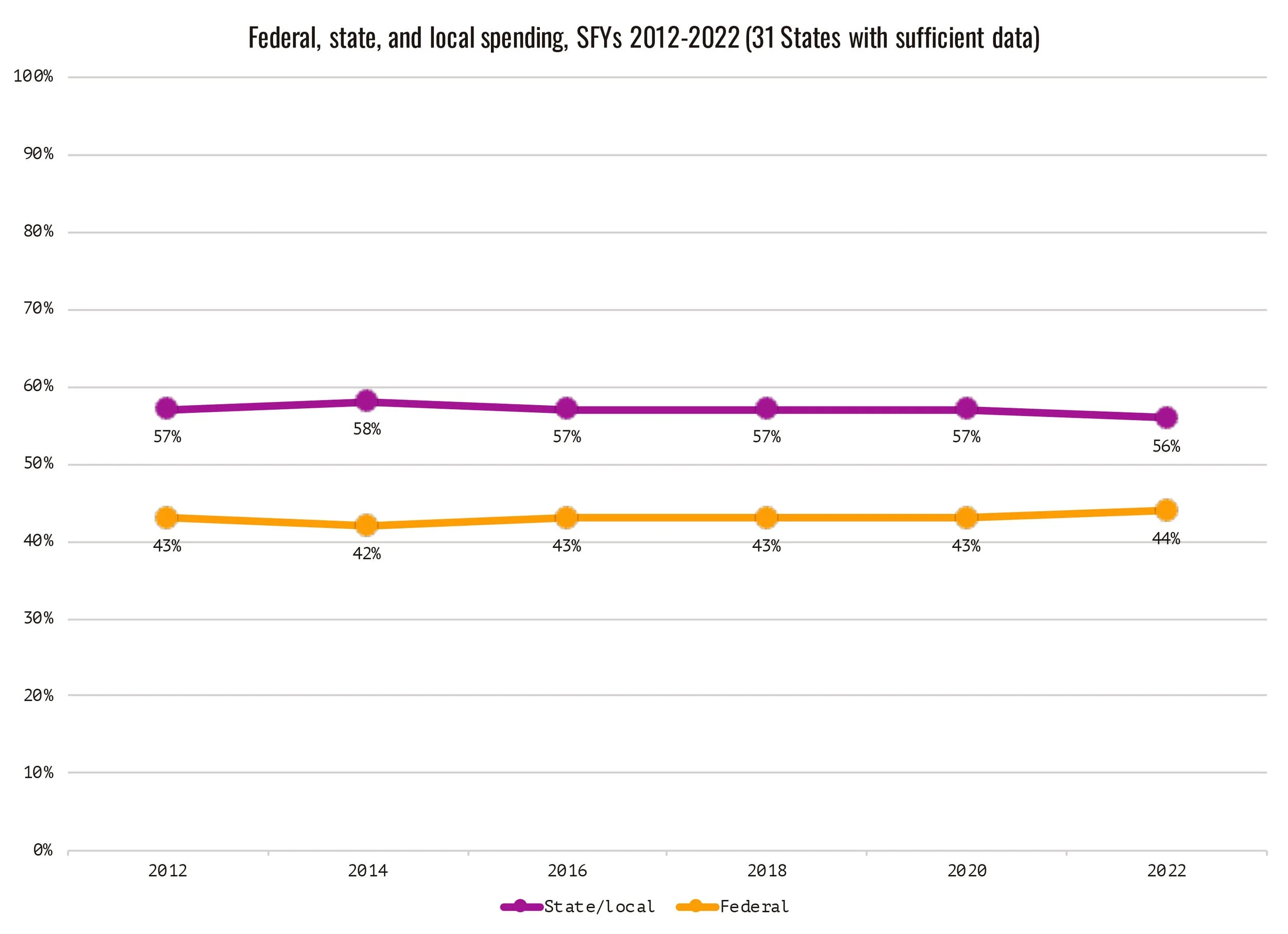An Introduction to the Family First Prevention Services Act
In 2018, bipartisan Congressional leaders and President Trump enacted a generational shift in federal child welfare financing, the Family First Prevention Services Act (Family First). The law embodied a broad policy consensus: that public financing should align with evidence-based approaches to supporting children and families—specifically, by prioritizing keeping families safely together to uphold family integrity and autonomy.
Federal child welfare financing has long paid for foster care and continues to do so. What Family First changed is allowing Title IV-E federal funds to:
Promote keeping families safely together when possible;
Prioritize and support kinship placements when foster care is necessary; and
Require that when a child needs institutional care, it be high-quality and individually-focused.
Policymakers and stakeholders are looking to what comes next. But that conversation lacks a common grounding in data to benchmark implementation and inform deliberations.
This analysis offers the first comprehensive data-centered view of how Family First is reshaping the flow of federal child welfare funds.
Seven years after Family First enactment, expenditure data suggest a shift in spending patterns. This analytical baseline can support productive bipartisan policy deliberations about what comes next.
Child Welfare Financing Overview
Federal child welfare financing refers to the funds the federal government provides for implementing child welfare policy. These resources finance activities including:
Preventing and responding to child abuse and neglect;
Supporting families with evidence-based services to avoid unnecessary foster care; and
Providing care when children can’t remain safely with family.
Child Welfare Specific Funding Streams
The following programs are focused directly on child welfare:
Title IV-E of the Social Security Act (Title IV-E)
Nearly 60 percent of federal child welfare funds are from Title IV-E, which is the law Family First reformed
Title IV-B of the Social Security Act (Title IV-B)
Child Abuse Prevention and Treatment Act (CAPTA)
Broader Funding Streams Key to Child Welfare
States use a portion of funds from the following programs to fund child welfare services and infrastructure, as one component of a broad safety net to many populations:
State-Federal Partnership Dynamics
Child welfare policy is a state-federal partnership, in which the federal government currently pays just under half of total spending but lays out critical policy rules that shape the system.
This is an important trend and tension to understand for analyzing federal policy.
Child Trends’ most recent Child Welfare Financing Survey found that nationally 44% of child welfare spending was federal, with 56% in state or local funds.
Federal financing not only supports the functions of child welfare policy, but shapes the incentive structures that drive it. For decades, most federal funding centered on responding to family crises only after a child entered foster care.
Over time, however, research made clear that while foster care can be essential in some cases, it is not always necessary. A growing body of evidence pointed to effective strategies for safely keeping children with their families, while addressing the root causes of crises.
As this evidence mounted, more states began testing new financing approaches aimed at preventing the need for foster care in the first place. Yet even as states increasingly committed their own resources to prevention and early intervention, federal funding remained largely tied to foster care—with no dedicated stream to support family preservation—until the passage of Family First.
Family First builds on significant evidence that indicates:
Children, youth, and families in crisis do best with support from their communities;
Children of all ages need close family relationships to develop and grow; and
The trauma that accompanies family separation often results in a lifetime of emotional and psychological problems.
There is also strong evidence showing that aligning public spending with these priorities yields cost savings relative to foster care.
Family First Overview
Family First is a generational bipartisan shift in federal child welfare financing. Its core policy reforms include expanding and shifting federal funding to prioritize:
Safely preventing unnecessary foster care. Family First amended Title IV-E, an open-ended funding source that previously focused on foster care. Family First allows Title IV-E to fund certain time-limited, evidence-based supports for children at risk of entering foster care and their parents or caregivers. These include mental health, substance abuse, and parent skills services.
Restricting the non-family foster care placements the federal government funds. Family First prioritizes family-based foster care placements, and restricts the conditions for federal funds paying for settings that are not families, like residential treatment.
Promoting foster care placements with relatives through kinship care. Federal and state policy already require prioritizing placing children who need foster care with kin caregivers—relatives and close family connections who care for children when they can’t remain safely with their parents. Family First provides funds to connect kin caregivers to community resources, so they can focus on caregiving.
Keeping families together in family-based residential substance use disorder treatment. Family First allows funds that finance foster care to pay for children to stay with their parents in specialized family-based treatment centers.
Project Overview
2025 marks seven years since enactment of Family First. In the absence of comprehensive fiscal analysis of its implementation, a range of competing narratives have emerged.
Bolder Horizon undertook this analysis to support policymaker deliberations with the implementation insights possible with existing data, and to benchmark for future monitoring.
This project focused on raising the floor of the policy conversation by offering sharp analysis without being prescriptive. The findings don’t propose what to do, but unpack the tradeoffs and tensions within the policy that will drive any future discussion.
There are now sufficient data to develop early benchmarks to track implementation, and provide key takeaways.
Project Team
Our project team included the following contributors.
Zach Laris, Founder & Executive Director, Bolder Horizon
Project leadership, oversight, and content developmentRebecca Robuck, ChildFocus
Project design & content developmentGrace Meiberg, ChildFocus
Project managementDon Winstead, Winstead Consulting
Fiscal analysis leadSteven Olender, Think of Us
Policy analysis & content developmentMeridith Byrne Paulhus
Graphic design & web development
Our team reviewed and analyzed publicly available expenditure and programmatic data to develop this analysis. We will continue to update it as new data are available.







